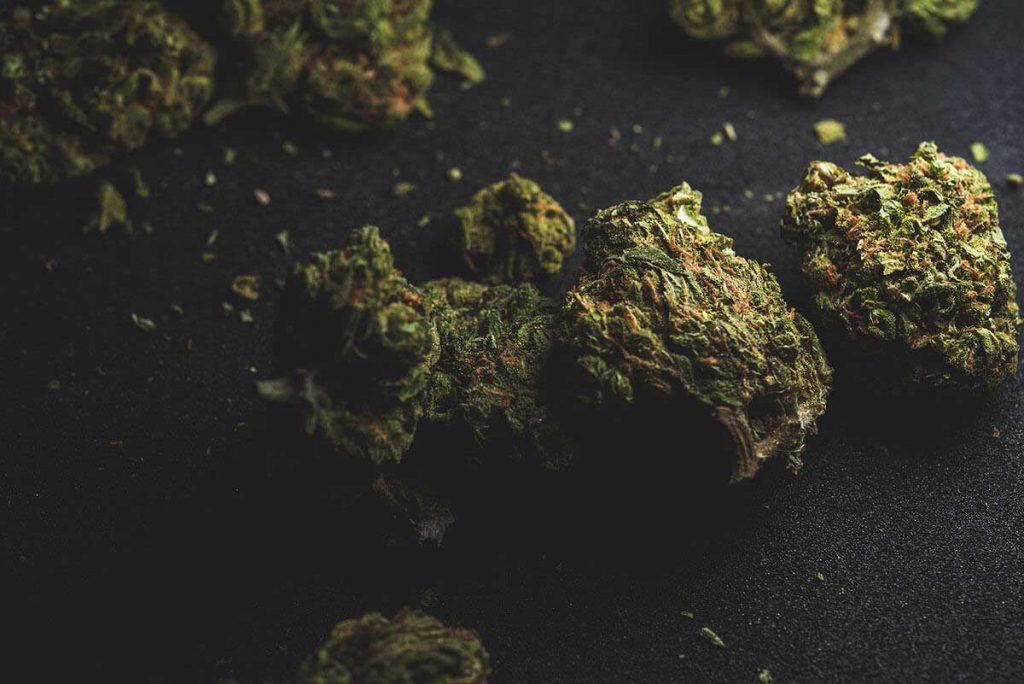
The approach involves patience, however, in exchange, extractors have had the advantageous chance to monitor the procedure on the go and play comfortably with the thc levels of the finished product – a possible benefit over all other concentration of extract.
Dry sifting becomes an accumulation of trichomes glands distinguished by its color and appearance with gentle-sand. It’s not really deemed an extract since through the use of any solvents, certain trichome buds that comprise dry sift were mechanically separated from the crop content. Sifting, including sieving of organic material throughout a display, will allow dry sift from home. Modern dry-sift producers use vibrational sieves that process industrialized cannabis numbers.
Trichome buds are the tiny appendages to the substrate of the crop, which generates the terpenes as well as cannabinoids. For preserved plant material, one can conceive of your trichome glands, including ripe fruits on trees. Your best way to extract these apples will be to smash the oak field and bring down the fruits.
You will be applying potential power by flipping the tree, which would cause the fruits to drop off from the tree then drop to the bottom. If you move the tree forcefully enough will get out many of the fruits, it is possible that some parts will also break off. If one were to capture all content falling from either the plant and use a panel with fruit size holes, you could capture any “contaminants” dropping off the plant and make sure only mature apples are passed through.
Dry sift becomes similarly made. Organic matter is disturbed over a filter with dimensions that suit the width of trichomonas glands; enabling trichomes can fall to the filter while trying to hold away from any organic matter that might minimize the sift ‘s integrity. Each trichome glands measure 20 around 120 microns across diameters, which corresponds to some of the several widely used panels.
The greater micron sizes contain all of the lipid bilayer-stalked stems and leaves (90-120 millimeters), whereas the shorter micrometers sizes (20-40 millimeters) separate the stalking glands. The quality of dried sifts primarily on the scale of the aggregating screens, the trace elements in the phase, and the crop material’s moisture levels. By “carding,” and softly brushing each sifts with such a card across smaller sheets, dry sift may be further developed; or even push that lower-melt sift through rosin.
By knowing the types of trichomes in cannabis plants, you can better grasp the nature of the powder produced after each screen.
These would be the lowest and have a diameter of almost 20 μm. Many people prefer to consume themselves in 45μm pipe hash; however, in general, glands heads shorter than 70μm were considered to be of questionable quality.
These range from 30 to 100 μm to mainly 60 to100 μm. They were far more numerous than as well as the most popular method of pointy trichomes.
These are sometimes called trinomial glandular. They are also the primary cannabinoid as well as terpenes manufacturers. Their stems are very wide, about 150 to 500μm long. Since they were the same form of trichomes that contain a coating of layers around the glands and the stem, enabling their points to also be easily separated from the unnecessary stalks, certain trichomes are therefore most appropriate for hashish of both the highest class.
Dry sift does have its benefits and drawbacks, just like any form of marijuana concentrate. Another of the greatest benefits for dried sift is how it is produced by the basis of the food processor that leaves the complete trichome secretion intact and creates a focus of broad-spectrum. The development costs of creating dry sift from home are also fairly low.
And although dry sift becomes relatively inexpensive to produce, it is hard work and time-consuming too. This can also contain greater quantities of toxins from plants than extracts dependent on solvents. Such pollutants are not dangerous, but they decrease the probability that a participating concentrate is made.
A very flexible concentrate is dry sift. Usually, the system used to ingest your dry sift becomes correlated with its quality ranking.
Pushing the 4-star through 5-star kief through a dabble herb is relatively simple by putting it in among dual parchment sheet pieces as well as pressing these with the hand. 3 to 4 stars sift works perfect for splattering on a floral cup, or even in a joint or blunt strap. If you really like consuming hookah, users can, however, attach dry sift with hookah lignite for a major flavor as well as effect boost. Every substance in the range 1-star and 2-star can usually be used to make edibles.
The concentrate is usually contained in a ceramic and silicone container, or even in paper towels, relying on the quality. Jars work well for a shorter period of kief preservation, particularly when stored in the fridge. Kief ought to be dust-sealed, including long-term placement, and held in even a glass jar in the refrigerator.
Hash producers have two key choices, including dry sifting from home, perhaps with a collection of panels or a decanter. Sifting devices can be purchased whether on its own or even as components of such a softbox that encases, piles, and divides the panels within a clean, sealed box for maximum functionality. A decanter is a fabric ring or device that carries and gathers organic fertilizer when turned, usually with a bucket or flat capture surface in which your dry sift gathers.
Dry sifting is indeed a simple, hand-crafted process for producing diverse yet potent items that can be conveniently adapted to personal preferences. The goods, thus made, carry that distinctive feeling of old-school artistry that feels extra special in the current generation of technological advent. when you need time enough patience off your side, you could also get anything pure and special to hold onto.
Important Links